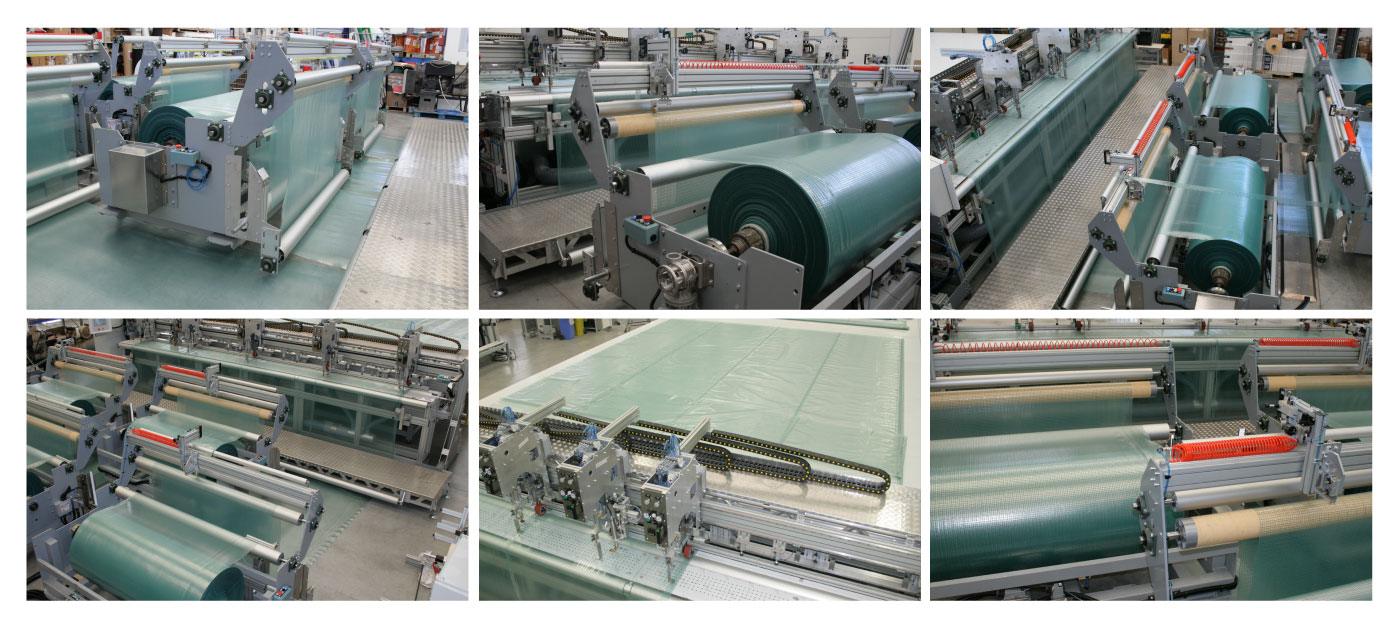Case Studies
Green Houses
The Challenge
A Belgian manufacturer needed to multiply its production output of high-end polyethylene thermoplastic fabric greenhouses and agricultural covers. These sheets are exceptionally large, with widths up to 7 m and lengths up to 11 m, and consist of up to 4 individual panels welded together. The short sides of each sheet require a pocket with a steel cable insert to mount the sheet over the aluminum greenhouse structure. The long sides also have reinforcing hems. Once mounted on the structure, the sheets are subjected to high tension, so the seams need to be long-lasting. As the products are marketed as being of the highest quality in the greenhouse industry, the seams had to look perfect.
The Solution
We developed a multiple-roll flatbed sealer to feed the fabric from up to four motorized unwinding stations with automatic edge correction and digital fabric tension control. Three high-power hot air welding heads installed on the tool bridge join the panels together while two lateral heads create the left and right hems. The fabric is pulled off the rolls by an extra-large grip-and-pull system. Left and right hems and overlap seams are created simultaneously. A traveling rewinding station, placed behind the roll that is cut to size, collects the off-cut material, and rewinds it on a bobbin, ready for re-use.
After the creation of the sheet with left and right hem, the machine then creates an air cushion, allowing a single operator to transport the material to the back of the work surface. A connecting platform allows the sheet to be placed on a second linear welding station that creates the pockets with a steel cable.
In just a few minutes, the extra-large greenhouse cover can be ready.
Increased output, luxury greenhouses.
Prior to installing the SolarEdge Automation Machines solution, this customer used manual cutting tools and high frequency and impulse welders to join the fabric and create the hems and pockets. Following the implementation of our solution, with the automated welding and cutting cycles, the company increased its hourly production output.
In the months following the new machine’s installation, the company was happy to report that for the first time in its history, employees would not need to work double shifts. This is because the new system enabled them to reduce the time required needed to make their job.
With the continuous tension control of the fabric during the welding cycles, the seams were not only strong but also flat and wrinkle-free. This could ensure the customer would be able to continue marketing their products as high-end.
The machine has been operating in our customer’s Belgian factory since 2011.
The SM-450-SA is working double shifts in this customer’s facilities in the Netherlands.
